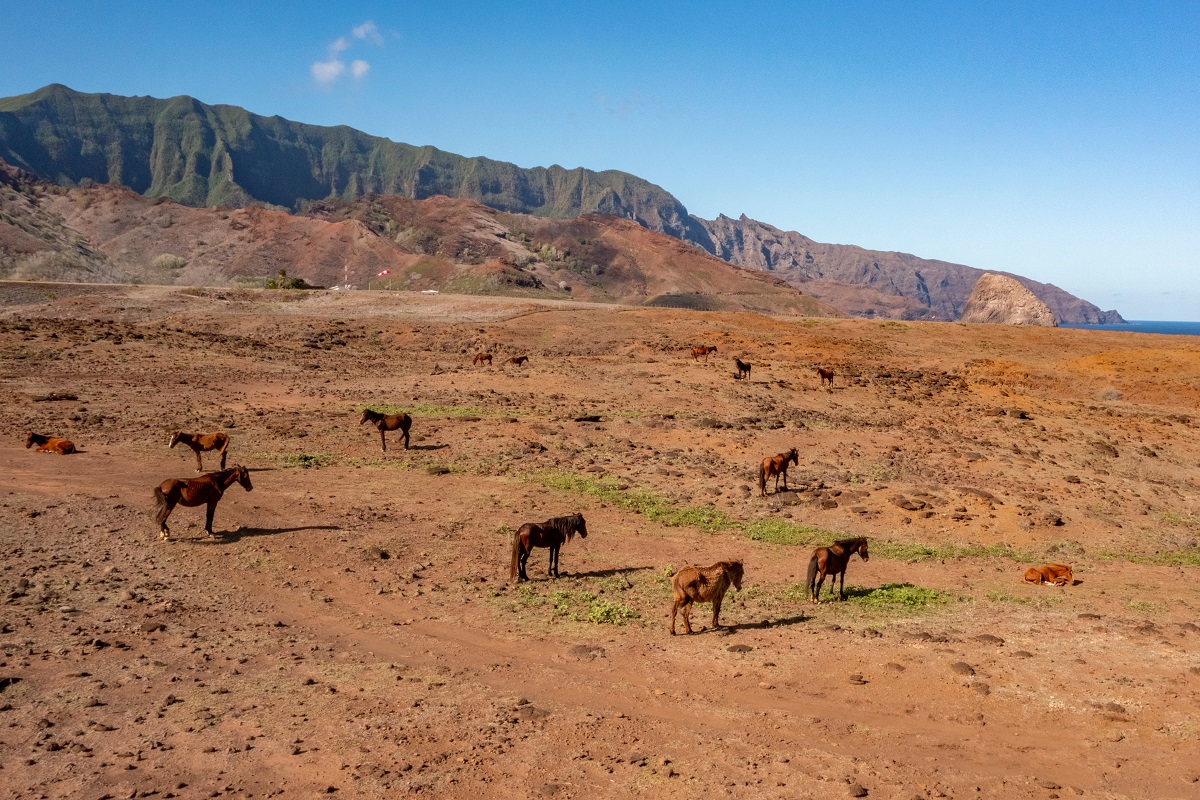Marquesas Islands, Resurrected Archipelago
More than 800 miles north of Tahiti, the Marquesas archipelago is one of the most remote and isolated lands in the world. Two districts group the northern islands with Nuku Hiva, and those of the south around Hiva Oa. Only half of the twelve islands are inhabited. Their sparse population leaves room for numerous wilderness areas, still preserved from human activity. Of the native civilization, formerly prosperous, remain archaeological vestiges of an inestimable value. This cultural singularity, coupled with an exceptional geology and biodiversity, led the Marquesas Islands to present their candidacy for Unesco World Heritage listing in January 2023. The answer will be given in the summer of 2024.
About the Marquesas Islands
Why Visit the Marquesas Islands
The Marquesas lands oscillate between desolation and abundance. The arid and terrible landscapes are followed by a magnificent contrast of lush forests and brightly colored bays. The Marquesas Islands are volcanic islands, devoid of lagoon and flanked by powerful cliffs. Their relief reflects immense mountainous massifs, surmounted by impressive peaks. Their black sand beaches complete a picture far from the clichés of French Polynesia and mass tourism.
These fantastic islands have consecrated the Marquesan people, heirs of the tiki civilization, where memory is inscribed in stone, wood and on the skin. The encounter with the Western world in the 18th century led to the near extinction of this culture and its people. In the 1980s, a new generation announced the revival of identity, resurrecting the customs and habits long forbidden or hidden by the occupying power. The Marquesas Islands remember their original name: Te Hunua Enana, or the Land of Men. An initiatory journey to meet a people who carry their heritage high and live in harmony with a formidable and tormented nature.
The Essentials of the Marquesas Islands
1. Marquesan Culture
Because of the geographical isolation, the Marquesan culture has been built according to an original model, which despite the prohibitions has kept its strength and its particularities. The islands are the most homogeneous cultural epicenter of French Polynesia. The Polynesian arts thus sublimated resplendent tattooed bodies, maohi dances and finely sculpted pieces. Every two years, the artists gather at the Marquesas Islands Arts Festival around a renewed theme. The next edition is held in December 2023 on Nuku Hiva.
The culture of the islands is based on an exceptional archaeological heritage. The forced evangelization in the 19th century was not accompanied by the systematic destruction of ancient religious and community spaces: they had mostly fallen into oblivion. Today, the Marquesas Islands have more than a thousand such sites and their inhabitants continue to discover new ones. Now maintained, these sites are becoming the formidable vectors of present-day Marquesan culture.
2. An Incredible Nature
The Marquesas Islands have an exceptional geology, creating rough and fantastic landscapes. For example, Nuku Hiva and its large arid canyon, or Ua Pou and its monumental basaltic peaks in the shape of needles. However, the mysterious often gives way to the marvelous. Nature has endowed the islands with creeks of great beauty. In Fatu Hiva, the Bay of Virgins is one of the most beautiful in the world. Often, these quiet places hide magnificent beaches.
Escaping pollution, the archipelago is like a natural laboratory. In the heart of the rainforests or on the sides of the mountains, many plant species are endemic. Some uninhabited islands have even been transformed into reserves in order to ensure the biodiversity and the perenniality of animal species. The seabed abounds with a numerous and diversified fauna.
3. A Responsible Tourism
The Marquesas Islands are a true sanctuary in the middle of the Pacific Ocean. Although the geographical isolation is a brake on economic development, the population does not want to give up its harmonious way of life and still refuses, for example, the construction of hotel complexes or industrial fishing. Their motto: respect for natural resources.
Coming to the Marquesas is opting for a sustainable tourism, concerned with biodiversity and local cultures. It is good to live with the inhabitants, to share their daily life and to appreciate their current or ancestral customs. The treks on foot or on horseback take place over a whole day, discovering spaces that are often virgin and deserted. This “slow tourism” allows you to feel the Mana of the islands.

The Marquesas Islands in a Nutshell
The Marquesas Islands offer a complete immersion. Carried by strong cultural identities, they are resolutely on the fringe of the usual tourist itineraries. Faced with the power of the harsh and enchanting landscapes, solitude and introspection are the order of the day in the Marquesas. It is not so much a matter of discovering Polynesia in a different way as of meeting another Polynesia.
For a stay including all the inhabited islands, count on two to three weeks at least. Visiting the Marquesas Islands requires time and organization; also a good physical condition to take part in the pedestrian activities. An alternative to a solo trip would be to take a cruise aboard the mixed cargo ship Aranui which supplies each island of the archipelago by sea. Contact us for more information.
Good to Know

Explore the Marquesas Islands
Check out Our Practical Tips, Recommendations & Ideas for Your Stay!








